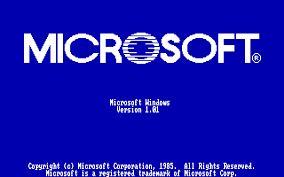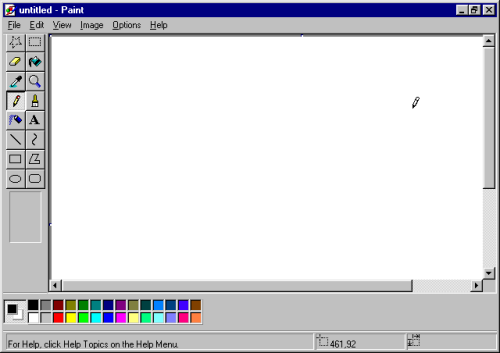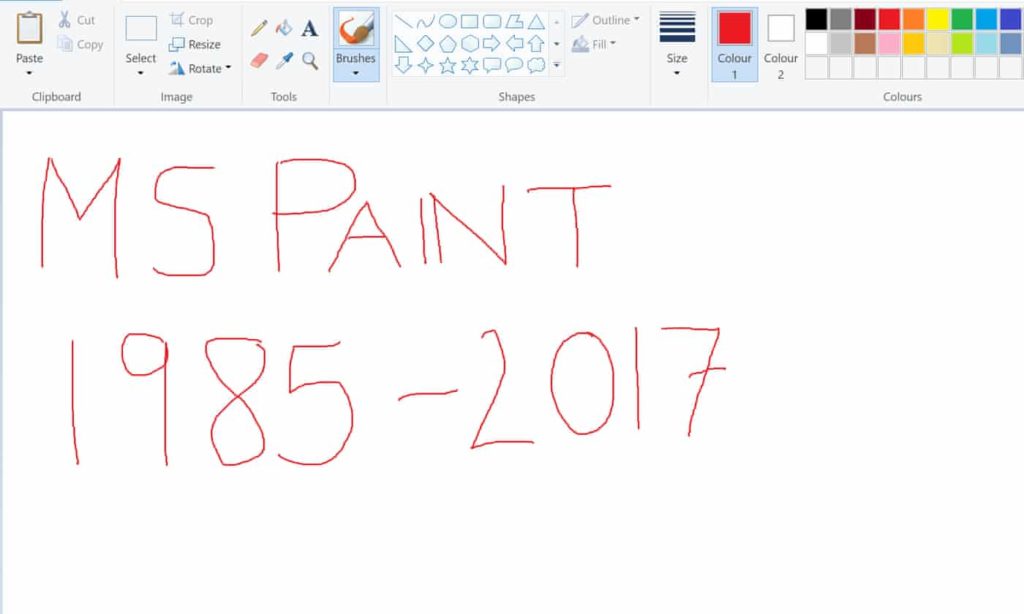Microsoft Paint is an application that has been a part of Window since 1985, most often associated with its poorly and badly illustrated digital art. For many, including myself, it was the first form of painting or editing images on the computer, and the only tool available at the time. Its simple interface and limited functionality was just part of its charm, and arguably allowed greater accessibility to many first time computer owners.
The app was designed and programmed by Mark Zachmann in 1985, originally through his company ZSoft. Prior to his software development career, he worked as a janitor for Kodak and began programming because it was “way better than cleaning toilets” (Jones). Initially, the prospect of an art program was not well-received, as it did not necessarily solve an immediate problem. However, at this point, the mouse was still very new to users, and the art program was an effective method of demonstrating its advantages. Following its release, Microsoft offered to bundle the software with every mouse they sold (Jones). According to Zachmann, “they just bought it, included it in Windows, and we never saw it again.”.
At the time, graphical interfaces unfamiliar to users, to say the least. It was of utmost importance that the program was approachable and easy to use, and this simple interface has remained consistent in MS Paint to current day. In order to ensure high learnability, Zachmann’s team conducted focus groups with children.
“Our feeling was that if a kid couldn’t run the software, we were doing something wrong. I continue to this day, producing software, believing that it’s really important to watch people use the software.”
Mark Zachmann
The goal of the program was to “ship it without documentation” (Jones). This was possible by offering users multiple methods to accomplish tasks; the mouse, the keyboard, and a scripted option. With this discoverability, most users could find some method to complete their tasks.
In 2017, Microsoft announced that Paint would no longer be included in the Windows 10 Creators Update, and classified it as a “deprecated feature” (Gibbs). The news left many nostalgic for a feature long taken for granted, but always trustworthy; it was truly an end of an era. Following the outpouring of commentary, Microsoft announced that the application would remain available, but rather than being built into Windows, it would be available for free in the Windows Store (Saunders).

Despite the many more capable softwares available for image manipulation, the application remains to be a cornerstone in many of our digital experiences. As children of the ’90s, MS Paint’s limitations forced us to make something out of nothing. Those long afternoons of tinkering on our first desktops in what we used to call “computer rooms”, led us to be as resourceful and adaptive as we are today.
Aldred, John. “R.I.P. Microsoft Paint, 1985-2017.” DIY Photography, 24 July 2017, www.diyphotography.net/r-p-microsoft-paint-1985-2017/.
Banya, Samuel. “History This Webpage Describes the History of MS Paint.” History of MS Paint, www.musimatic.net/FakeWebsites/TheHistoryOfMSPaint/history.html.
Gibbs, Samuel. “Microsoft Paint to Be Killed off after 32 Years.” The Guardian, Guardian News and Media, 24 July 2017, www.theguardian.com/technology/2017/jul/24/microsoft-paint-kill-off-after-32-years-graphics-editing-program?CMP=twt_gu.
Jones, Brad. “Mark Zachmann Remembers How ZSoft Built the Foundation for Microsoft Paint.” Digital Trends, Digital Trends, 22 Mar. 2018, www.digitaltrends.com/computing/the-history-of-microsoft-paint/.
Saunders, Megan. “MS Paint Is Here to Stay.” Windows Experience Blog, 28 June 2018, blogs.windows.com/windowsexperience/2017/07/24/ms-paint-stay/.







I love how you actually sketch MS Paint, reminds me that It used to be my favorite software. Also very clear and detailed information!